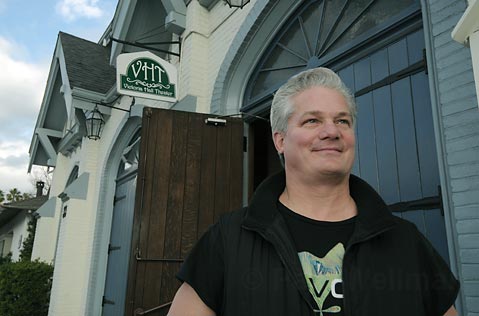Suicide Increase Prompts Action
Agencies Meet to Coordinate Game Plan

Right now, 145 representatives from a number of local of agencies are hunkered down in Victoria Hall, training to handle what has been described by many officials as “a dramatic increase” in teen suicides over the past year. Indeed, according to Sheriff Bill Brown, the number of overall suicides spiked in 2009, with 60 incidents compared to 34 in 2008, which was also a jump from 28 suicides in 2007. It is important to note, said seminar leader Dr. Robert Macy, that these simple, broad-brush numbers do not paint the whole picture as they fail to take into account age breaks and at least a four-year baseline of suicide attempts and completions. Information about the teen suicide rate was unavailable as the man with those numbers, Sgt. Gregg Weitzman of the County Coroner’s Office, was out of town.
“The problem of adolescents and young adults seeing no other solution than suicide grows quickly to crisis proportions when it catches fire among youth,” said Santa Barbara School District Superintendent Brian Sarvis, articulating the purported suicide epidemic among youth. “That’s a scary thing.”
The three-day informational and training session — which runs from Thursday through Saturday and was organized by The Glendon Association — is meant to assemble key players in one room, as well as teach prevention and coping skills to those who deal with suicidal incidents: law enforcement, the county’s Mental Health Services, private and public schools, health facilities, local governments, and faith-based groups, among others. One of the challenges facing area efforts to treat those who are considering suicide is reportedly the lack of collaboration and communication between aid groups, so the seminar aims to bridge that gap.

The event is free to attendees as considerable private funding was raised by the Santa Barbara Foundation and the James S. Bower Foundation. The space, parking, food, and beverages were also donated without charge.
As Santa Barbara Mayor Helene Schneider put it before the opening of the intensive workshop, “Right now, so many agencies are working to help the same people, but people sometimes need to talk to five or six different agencies before they can get the proper help. How is that benefiting the person in need?” Schneider went on to say that by getting the right people together, and by allowing experts to learn and hear from one another, important professional relationships will hopefully be built to facilitate proper and efficient responses. “If we want to effect a change, it will take all of you to intervene and prevent people from committing a very desperate act,” Sheriff Bill Brown said to the crowd.
Leading the effort to create a local, collaborative team of individuals qualified to administer emotional first aid — including to relatives of suicide victims who often suffer from post-traumatic stress disorder — is Dr. Robert Macy, an internationally recognized expert in community trauma treatment and prevention. Macy, who recently returned from earthquake-ravaged Haiti where he performed trauma-coping training, told the crowd during the event’s opening ceremony that the three-day affair would include activities, drills, and simulations, and that he would attempt to cram five to six days of information into the limited time they had.
Macy told the attendees, before media representatives were asked to leave for the remainder of the seminar, “I’d like to invoke for all of you in the room right now an idea and an experience. We have three days together. The chance that this group of humans, this new clan, that comes from a congruent root which is Santa Barbara, and your willingness and your courage to say, ‘You know what, we’re not going to let our kids kill themselves’ — the likelihood that we’re going to get all of you assembled again for three days is low. We’re going to get pieces of you together, we’re going to keep the network going. Right now,” he went on, “you have an opportunity to do something you’ve never done before, and you’ll never probably get to do again: To build a network, to build a team, to build an ethos, to build our own constitution around how we will, with humility, with science, with our intuitive hearts, go about understanding what is most important for kids who are looking at suicide as a solution.”
Speaking on the daunting task of preventing suicide when people see no other option, Macy emphasized the importance of prevention. “You’re not responsible for saving the lives of 24,000 kids,” he said, in reference to the number of schoolchildren on the South Coast. “It’s almost impossible to save a child’s life. … That’s [why] we have to be a part of their lives. Then we don’t have to do life-saving measures.”



